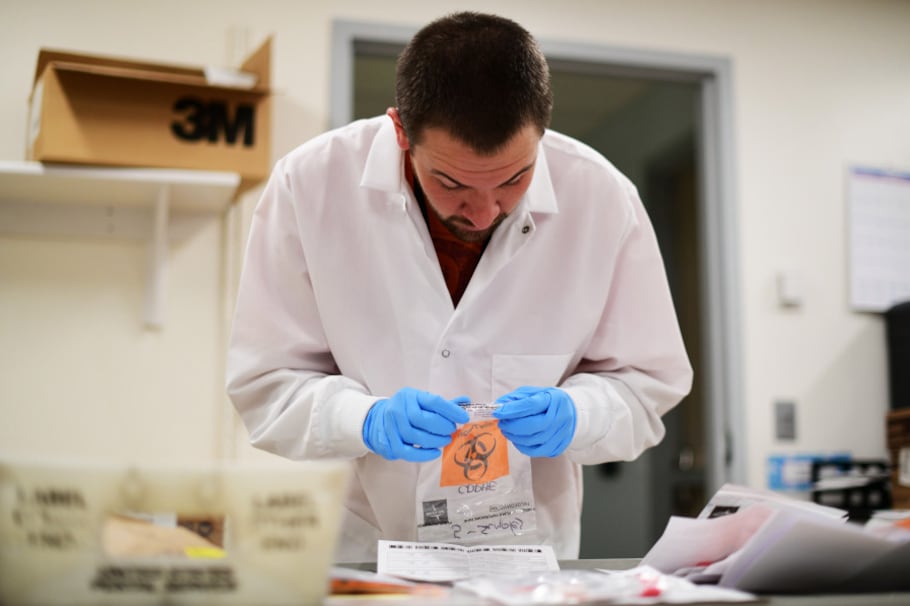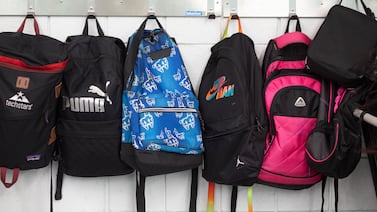A single student or teacher infected with COVID at a Denver high school could cause as many as 120 other people to stay home for 14 days, according to district planning documents obtained by Chalkbeat. The same scenario at a Denver elementary school could lead to as many as 60 people being asked to quarantine.
And these are best-case scenarios if Denver schools adhere to careful scheduling that limits how many people interact with each other every day.
While many students, teachers, and parents long for a return to “normal” school, the planning documents make plain that normal is not on the table. Even with restrictions, every school day will present numerous possibilities for exposure and — when students or staff test positive — disruption and anxiety.
Bill Burman, director of Denver Public Health and chair of the Metro Denver Partnership for Health, said he and his colleagues are looking for ways to reduce the disruption — with proper masking and other precautions perhaps fewer people could stay home for a shorter time period. Burman is a strong advocate of children returning to school.
“There are risks to having kids go to school and risks to having kids stay home, and we should strive to balance those,” he said.
But other public health experts interviewed by Chalkbeat said the large number of contacts involved in the school day raise questions about the wisdom of trying to bring students back full time.
Theresa Chapple-McGruder, an epidemiologist who has worked with school districts and minor league and youth sports organizations on their plans, audibly gasped when she was told a schedule designed to minimize exposure would still involve so many interactions each day.
“There is no way we can keep people safe if we are exposing them to a minimum of 60 people a day and then consider all the people those people are in contact with,” she said. “That’s a recipe for disaster.”
Denver district officials did not respond to questions about the plan, saying only that it is a draft and still subject to change.
“We are still having conversations internally and with local health officials on the safest way to welcome students back and what protocols should be in place when that occurs,” a spokeswoman said in an email.
Since May, Gov. Jared Polis has urged Colorado school districts to offer full-time in-person instruction this fall, even as he has also acknowledged that school-based outbreaks are inevitable. He has suggested that “cohorts” or keeping groups of students separate could be used to contain the spread within school buildings. The hope is that even if one classroom had to transition to remote learning, other students in a school could keep attending class, thus minimizing disruption.
Denver’s plan is based on that same principle. The plan stresses that every effort should be made to limit how many people each person in the school building interacts with. Staff meetings should be held virtually, and parents won’t be allowed in school buildings, for example. And groups of students should be kept together, with limited interaction with other groups of students.
But when it comes down to the nitty-gritty of planning the school day, there’s still a lot of interaction with a lot of people. Students receiving special education services or English language instruction or extra help with reading get pulled out of classes or specialists go in. Many school nurses and psychologists work at multiple schools. Some students need one-on-one paraprofessionals by their sides in the classroom. Students go to before- and after-school programs and participate in sports.
And that means that it takes careful attention to schedules and many new routines to limit students to just two cohorts, each of roughly 30 people, in the case of younger students and their teachers and three or four cohorts and their teachers in the case of older students.
“How can we best simultaneously support health and safety during a pandemic AND offer a school experience that will support engagement, learning, social and emotional needs, and equity?” asks one slide on a presentation to administrators on scheduling and cohorts.
In the draft quarantine plan, if a student tested positive, the district would ask everyone in these categories to stay home for 14 days:
- All students in every class that the student takes in person
- All students in any school-sponsored activities that take place before or after school
- All teachers who teach a class that the student takes in person
- All adults that run a school-sponsored activity in which that student participates
- Any administrators or other teachers who were present in the classroom during the preceding 14 days for more than 10 minutes and within 6 feet of the student.
And if a teacher tested positive these people would have to stay home:
- All students the teacher teaches in person
- All students present in the classroom when the teacher was teaching
- Any adults the teacher interacted with in person during the preceding 14 days for more than 10 minutes and within 6 feet.
When there are four or more cases in a school, the entire building would be shut for three days, and then those who were not exposed could return. The plan acknowledges that enough staff might have to stay home that the school couldn’t operate and would remain closed for longer.
While the plan describes quarantine scenarios, it’s not clear whether or how isolation will be enforced.
Burman thinks this level of precaution may not be necessary, though he’s not yet prepared to propose a concrete alternative. Most other businesses wouldn’t send that many people home for that long. If schools are diligent about masks, hand-washing, and ventilation, Burman believes the risk of transmission within them is low.
He also points to the experience of child care centers that stayed open throughout the early months of the pandemic, with relatively few cases. Some scientists see a growing body of evidence that while children can and do infect others, they do so at much lower rates than adults, in addition to being at lower risk of serious complications.
And when there are outbreaks in schools, epidemiologists will have a head start in identifying those at risk, he said. If children are home but not supervised for much of the week, that might not be true.
Critics, including Chapple-McGruder, believe initial studies based on the experience of child care centers aren’t very useful. Very few of those children were ever tested and contact tracing was nearly nonexistent, so there’s no way to know how many children were infected or what infections might be traced back to them.
She said if anything, the quarantine scenarios understate the amount of exposure involved in attending school. Teachers and students spend far more time in close contact in poorly ventilated rooms than people in most other workplaces. Parents mingle at the bus stop. Grandparents pick children up from school. A child and their parent might both remain asymptomatic but infect a third person who ends up on a ventilator. It’s one reason she plans to keep her own children home from school.
Chapple-McGruder fears that schools have the potential to make community spread worse.
“One reason we don’t have great data is because we shut down schools,” she said. “This was a prevention strategy that worked. Just as with reopening, we did it knowing we would see an increase in cases. We are reopening schools knowing that more children will get sick.”
As cases have risen over the last month, child care centers, summer camps, and sports programs that serve children have all seen outbreaks. In New York state, at least 15 additional cases traced back to a single child who continued to attend an in-home day care while their mother waited for test results.
It’s not clear how testing would be handled for students and staff. While schools can send home children with fevers or coughs, it’s unlikely that parents could be forced to have their children tested. And while it’s become much easier to get tested, wait times for results are long.
Chapple-McGruder and Burman agree that the key factor in making school safer isn’t changing the schedule to have children encounter fewer people but reducing the overall incidence of the disease.
Burman said if the number of cases gets high enough in the community, schools will have enough cases that constant disruption might outweigh the benefit of being in the same room as teachers. Chapple-McGruder thinks schools should put their energy into better serving children and families at home until the disease is more contained.
Caught in the middle are worried parents and teachers.
Denver parent Lisa Sigler told the district in a survey that she plans to send her daughter, a high school senior with some special needs, back to in-person classes, but knowing about the district’s contact tracing and quarantine plans doesn’t make her feel better about her doubts.
“It is so complicated,” Sigler said. “The effect that COVID will have on our schools will be a ripple effect through our communities. You are going to have families and parents that now can’t go to work and teachers’ families that are impacted too.”
Yesenia Cortes Corona, a mother of four Denver students, said hearing about the quarantine plans just reminds her that going back to school is a risk.
“We’re trying not to go out anywhere to stay safe,” Cortes Corona said. “And you never know. You don’t know who else is safe.”
Chalkbeat’s Yesenia Robles contributed to this report.








